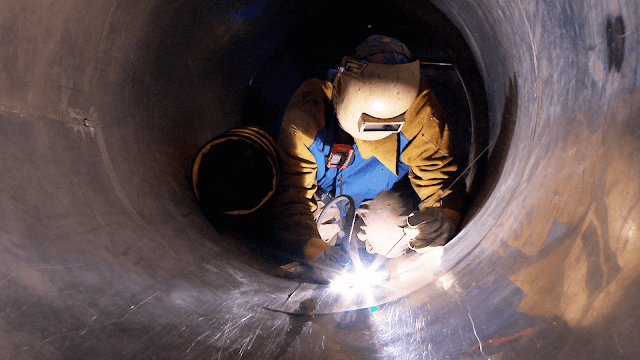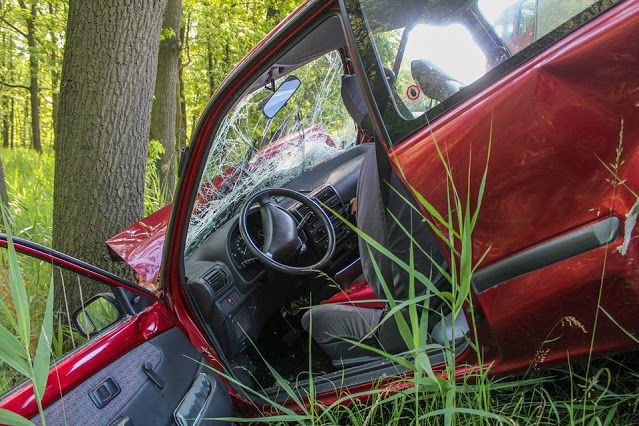Construction Safety - From Concept to Implementation
Construction plays major
role in development of a nation, a large number of people commonly earn their
butter and bread from construction industry and run their family expenditures.
On one hand where it offers you lucrative jobs and salaries this sector
requires extremely hard and perilous works where if safety regulations not
followed one can meet with unpleasant moments including injuries or even death.
What makes you safe while working on a construction site, we will be talking in
next few minutes in our today’s blog:
Let's start with what you'll be wearing at construction site, you've got to be properly dressed at the worksite at a minimum that means hard hat long pants heavy-duty work boots with a non-skid sole a shirt with sleeves a safety vest or bright colored shirt and eye protection check your hardhat to make sure that's in good condition if there's tears in the suspension or holes in it you'll need a new one during the course of a normal work day you may be exposed to different types of eye hazards including flying particles sparks or chemical splashes you need to be wearing eye protection at all times that means safety glasses goggles a full face shield or a combination of the three.
 |
| Steel Fixers on a construction site connecting steel for the concrete work |
There are lots of jobs that require you to be wearing a full face shield over your safety glasses or goggles and if you're cutting or welding you'll need to have special eye protection hearing protection is essential to protect you from noise if it's hard to hear a person three feet away without them yelling you need hearing protection there are two types of hearing protections available earplugs and earmuffs in some cases you may need to wear both.
You also need the right kind of work gloves, heavy-duty gloves will protect against rough or sharp edges abrasive surfaces and splinters a lot of people don't realize that wet concrete can hurt your skin it can cause serious burns and skin irritations so you need to wear rubber gloves when working with concrete and also be sure that you've got rubber boots on if your hands are any part of your skin comes into contact with wet concrete you need to wash the area immediately, and if you're doing anything with acids corrosives or solvents you really need to be wearing the right kind of gloves it's a good idea to remove rings under kind of jewelry that can catch on a corner and cause an injury and if you're wearing a chain around your neck it needs to be under your shirt.
 |
| Picture: Welding work on a construction site |
Project crisis and emergency response plan on site tells you what to do if there's an emergency such as a natural disaster a fire a hazardous material spell or some other kind of incident, the people who have incident commander or emergency coordinator vests are not only there to assist in the event of a crisis but also to help answer questions or report potential hazards quality issues or near misses other than police or other emergency personnel, they are the only people who should be giving you directions during an emergency don't start doing things unless you're told by a person with one of those vests on. All injuries need to be reported that way we can make sure and get you all the help that you need likewise if you have a near-miss that needs to be reported so we can learn from it and keep it from happening again.
Construction workers are
killed each year on the job that's more than three workers every day and about
a third of those are because of Falls all of those can and should be prevented
any place that there's a potential fall of more than six feet you need to be
protected it doesn't matter if it's an opening in the floor or around the
outside of a building the most common type of fall protection is a guard rail
guard rails need to be constructed of either wood or wire rope and have a top
rail that's 42 inches off the ground a mid rail and a toe board if you remove a
guard rail alternate fall protection must be used and never leave an area
unprotected for any period of time you must reinstall the guard rail before you
leave the area if you're working at an elevation where guardrails don't provide
enough protection such as off a ladder near an open-sided floor you also need
to wear fall protection gear another common form of fall protection is a
personal fall arrest system this includes a harness a lanyard or retractable
lifeline and an attachment point you've got to inspect your harness daily for
cuts tears and frayed straps buckles snap hooks and safety latches all need to
be looked at any time you put on a harness if anything is broken or damaged
don't use it give it to your Foreman so that nobody else uses it.
Before you use a ladder inspect it to make sure it doesn't have any broken rungs or cracked or split side pieces if it does don't use it take it out of service before you start climbing check to make sure that the ladder is set on a sound base and the side braces are locked and don't ever use the top two steps to stand on if you're on an extension ladder then the ladder hooks need to be properly set and the ladder has to be tied off when you're climbing always use both hands tools and materials need to be pulled up in a bucket or by a it's the safest way to go up and down a ladder and you'll always have at least one hand on the ladder and be sure to face the rungs or steps when you're working off or climbing up or down a ladder.
 |
| Excavation Work in Progress on a proposed vertical structure site |
Lot of jobs may require
you to work on a scaffold you need to inspect it yourself, make sure that it's
on a solid footing and that it's level and if it's more than two sections high
it needs to be tied off and then the other thing that you really want to be
sure of is whether the planking and supports are in good condition.
Most job sites will also
have a lot of trenches that we need for underground utilities or foundation
anytime that you are working in a trench or confined excavation that's more
than five feet deep it has to be braced short or sloped back this includes the
area between the foundation wall and earth bank even a large foundation
excavation can become a trench once we start putting in formwork or walls any
excavation must be inspected every day before anyone goes into it do not enter
a trench until a competent person has done the inspection most often this will
be the foreman of the team that dug the trench never go down into an open
trench unless the excavation is properly short not even for a minute otherwise
there's the chance that if the soil gives way you'll be buried and either be
crushed or suffocate.
If you're doing any kind
of cutting welding or anything with an open flame you need to have a hot work
permit, all combustible materials must be removed within the vicinity of the
work if materials cannot be removed they must be covered with fire blankets, a
fire extinguisher must be available and a fire watch posted while you're doing
the work. Keeping your job area clean scrap debris trash and anything else that
might be a tripping hazard needs to be picked up and thrown in the trash
including anything that's on stairs scaffolds ramps walkways and all other work
areas.
Remember! Working safe
can only get you home safe, safeguard your body because it has no spare
parts.



Great.. Very informative article @Aqeel Khawaja
ReplyDeleteVery useful information regarding construction safety.
ReplyDelete